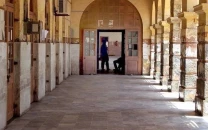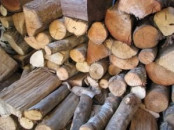Highways to get a makeover
Environmentalist blame housing societies for loss of green cover

Even though the city undertakes massive plantation drives every year, its two major highways, the Islamabad Expressway and the Srinagar Highway lie bereft of greenery with the civic authorities lacking comprehensive landscaping plans.
Talking to APP, officials in the Islamabad Metropolitan Corporation (IMC) said that they have worked out several plans to make the capital clean and green including, the installation of road signs and planting trees. But most of the projects could not materialise due to a paucity of funds.
On boosting greenery along the 25-kilometre-long Srinagar Highway and the 28-kilometre-long Islamabad Expressway, IMC officials said they had planted more than 20,000 plants recently.
"The survival rate for plantation on these roads is 67 per cent," the official lamented.
When asked about the reason behind the few trees along the two thoroughfares and the poor survival rate despite claims of a massive plantation along the roads, the IMC official said that the heavy flow of vehicles was one and the other was that many families choose to lounge on the broad green belts established on either side of the two highways where children from different localities come to play and trample saplings inadvertently.
About the absence of road signs and other initiatives, the IMC officials said that this fell within the purview of the Capital Development Authority (CDA).
Meanwhile, sources in the CDA explained the lack of greenery along the two highways as an ongoing project.
An official said that recently a meeting had been held over the issue by the competent authorities.
"There is no plan on paper at the moment for landscaping of Srinagar and Islamabad highways,” the official said. However, he quickly added, "the department will soon draft a project concept-I (PC-I) for carrying out beautification measures along the expressway.”
Separately, environmentalist Iqabal Khaliq said that the highway built after the 1960s to connect the federal capital with Rawalpindi, Grand Trunk (GT) road and other intra-city major thoroughfares have gradually lost their beauty due to mushrooming housing societies along the road.
"The expressway, which welcomed its commuters with a scenic view of Margalla hills until the dawn of 21st century, has now gone into hiding behind tall buildings," he alleged.
Citing a recent report, he said it was astonishing to read that around 64 per cent of the Islamabad Expressway did not have trees.
Published in The Express Tribune, October 5th, 2020.



















COMMENTS
Comments are moderated and generally will be posted if they are on-topic and not abusive.
For more information, please see our Comments FAQ